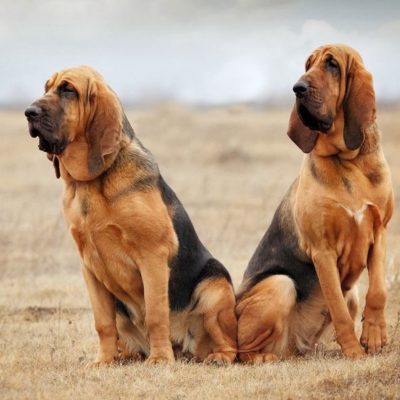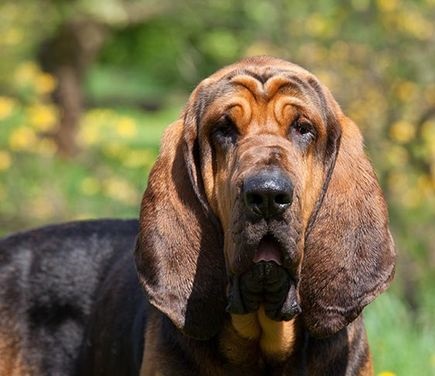Bloodhound

Bloodhounds are gentle and affectionate dogs that make excellent pets. They are kind and sensitive, friendly to children, and appreciate the company of other dogs or even cats. Bloodhounds are quiet and easygoing, although they can be reserved with strangers, so early socialization is essential and can prevent them from being shy.
Table of Contents
Breed Information
| Another Name | Chien de St. Hubert, St. Hubert Hound, Sleuth-hound |
| Origin | Belgium, France & United Kingdom |
| Height | Males 66-70 cm Females 61-68 cm |
| Weight | Males 46-54 kg Females 40-48 kg |
| Fur | Short, smooth and shiny |
| Color | Red, black and brown-padded, brown |
| Lifespan | 7-9 years |
| FCI Classification | Scent hounds and related breeds |
| Group | Dogs for security, dogs for protection, dogs for children |
| Price | From $850 |
Breed Photos
Origin History
Previously, the Bloodhound was treated as a hound dog breed. The ancestors of this breed originated in medieval Belgium and France. The number of representatives suffered significantly during the French Revolution in the eighteenth century. In England, the oldest records of Bloodhounds date back to the fourteenth century, and claims indicate the arrival of these dogs from France.
The first mention of the Bloodhound breed appears in a poem by Sir Humphrey de Bogun in 1350 called William of Palermo. The dogs were used for hunting, and there are mentions of them tracking down thieves and poachers in the 1300s. The breed’s numbers dwindled considerably with the decline of deer hunting. However, with the advent of shows and Queen Victoria’s support, the breed’s enthusiasts were able to continue breeding and later exported them back to France.
Bloodhounds arrived fairly early in the United States, where they were used to track and search for runaway slaves. After the U.S. Civil War, they became popular as tracker dogs and were widely used by police and other law enforcement agencies. Today they are used to track escaped prisoners, missing or lost people, and pets.
Appearance
Bloodhounds are rather large and heavy dogs, well-fed for their height. Their coat is short and dense and comes in several color variations, with black and brown being the most common.
They have an oblong muzzle, very long floppy ears that fold into folds. The skin is thin and soft to the touch, and there are sagging folds. Their anatomy is designed for the sense of smell, as their pendulous ears help carry odor from the ground to the nose. They have a large nose compared to other dog breeds and an increased number of olfactory receptors.
The male weighs 46 to 54 kg, and the female weighs 40 to 48 kg. Male Bloodhounds are usually between 64 and 72 cm tall, and female Bloodhounds between 58 and 66 cm.
Character
Bloodhounds are gentle and affectionate dogs that make excellent pets. They are kind and sensitive, friendly to children, and appreciate the company of other dogs or even cats. Bloodhounds are quiet and easygoing, although they can be reserved with strangers, so early socialization is essential and can prevent them from being shy.
Although they are portrayed as lazy because of their “saggy” appearance, dogs of this breed are very active. They love long walks and are the perfect companion for those who like to roam. Because they are hounds by nature, Bloodhounds instinctively follow scents and are tireless in doing so. It’s almost impossible to regain a dog’s attention after sensing an interesting scent and beginning to follow it. For this reason, off-leash walks are not always advisable (but, of course, this depends on the dog and his training). Bloodhounds should have a fenced yard, so they don’t wander into the neighborhood and get lost.
Care
Bloodhounds require a fairly high level of grooming, and they have a “doggy smell” as well as a lot of drooling. Because they have such long ears, they often put them in the food bowl and get dirty. Therefore, it is good to keep a rag handy, as they will need to be cleaned often. Their wrinkles are a perfect breeding ground for bacteria, as are their floppy ears, so they should be wiped daily with a damp cloth and then a dry one.
The upper part of the lip will probably need to be brushed after meals, too. We recommend brushing them weekly with a rubber brush. Nail clippings and brushing of teeth will supplement coat care.
Training
Bloodhounds are well-trained, intelligent dogs. They are extremely responsive to praise from a strong leader. Because of their tracking instinct and a strong sense of smell and determination in doing their job, they can be stubborn. It often makes obedience training difficult. They need a constant and firm owner, but also one who loves and praises often. Bloodhounds are very sensitive to criticism. Training should begin early (as early as three months of age), as should socialization, as they may be shy around strangers. Training should be short (15 minutes) and frequent.
Common Diseases
Bloodhounds are one of the shortest-lived dog breeds, with a lifespan of 7 to 8 years. They are also prone to many health problems, including:
- bloating of the stomach;
- hip dysplasia;
- elbow dysplasia;
- eye disease;
- hypothyroidism.
Nutrition
The Bloodhound gets everything it needs with the food and, at the same time, does not overeat. Do not buy cheap food with cereals or bone meal in the first place. Premium food with a high meat content is an excellent choice.
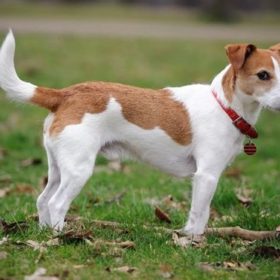 Parson Russell Terrier
Parson Russell Terrier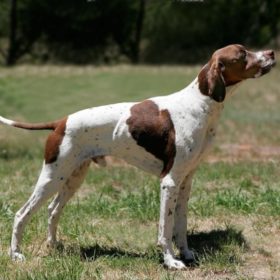 Pointer
Pointer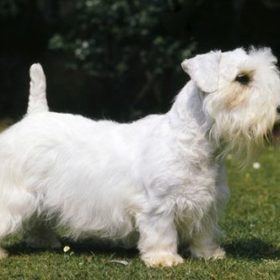 Sealyham Terrier
Sealyham Terrier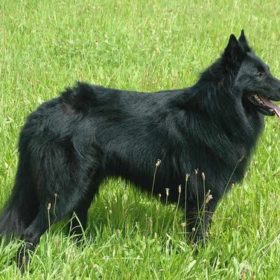 Belgian Shepherd Groenendael
Belgian Shepherd Groenendael Shar Pei
Shar Pei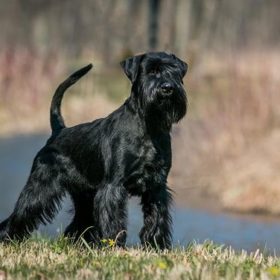 Standard Schnauzer
Standard Schnauzer
